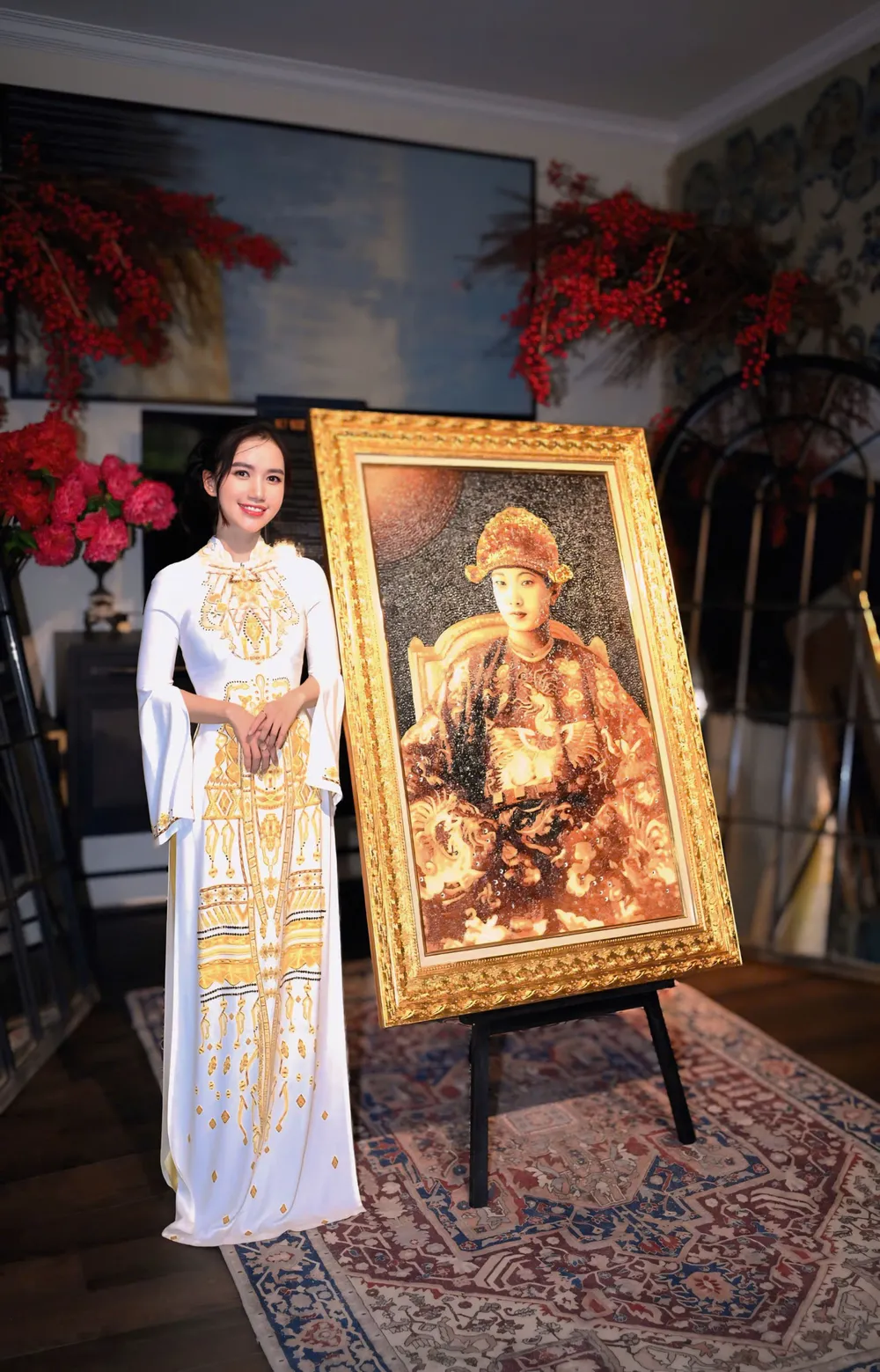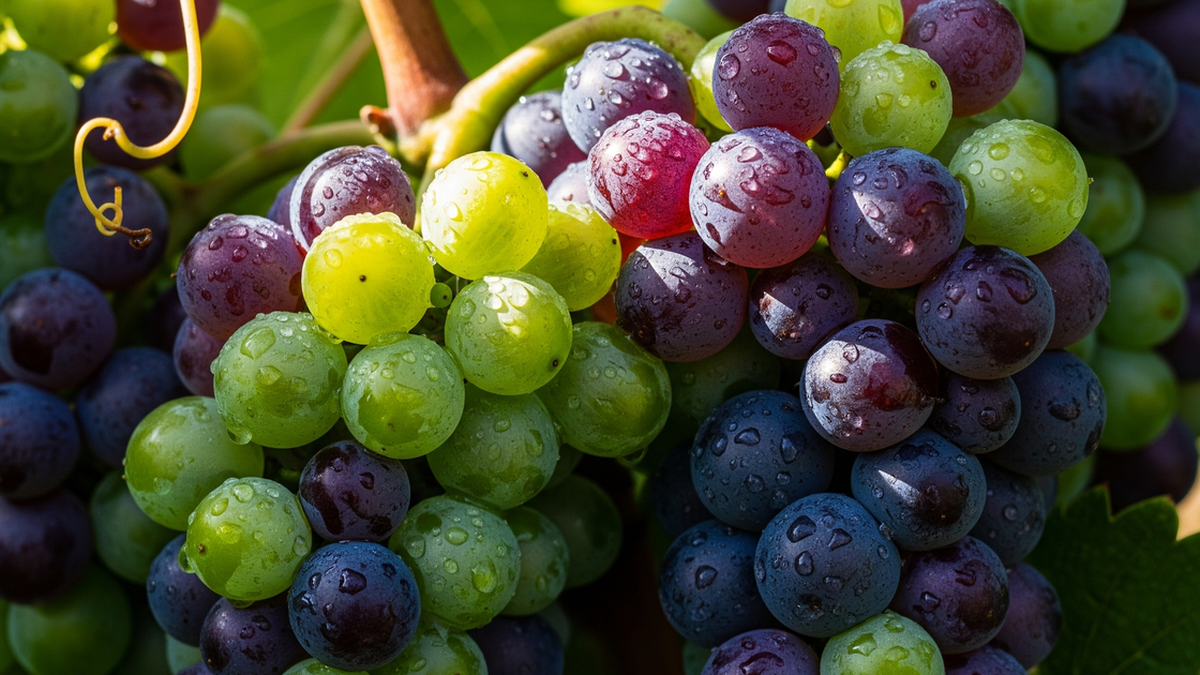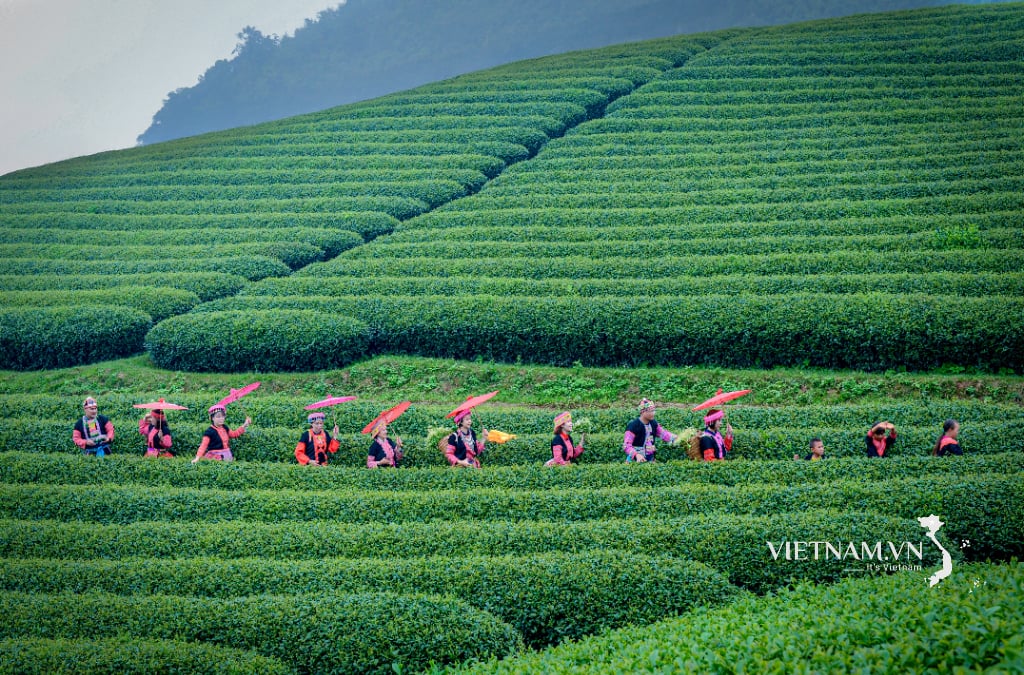From the love of rice grains
Da Teh district ( Lam Dong province), Truong Kim Ngan's hometown, is all sandy land, making it difficult to grow anything, but for some reason, growing rice, although the yield is not high, produces very delicious, fragrant rice grains.
Ms. Kim Ngan shared: “Every Vietnamese person loves rice grains, because we see it regularly every day, associated with rice grains for thousands of years, it’s just that people don’t realize it or don’t know how to express it. For me, making paintings from rice is a way to cherish this product, and also a step to realize my dream of helping my homeland because although the rice in Da Teh is delicious, the yield is very low, the harvest and sale are only enough to cover the cost of fertilizer and water.”

12 years ago, when rice paintings were just emerging on the market, Kim Ngan began to research. Being a well-educated person (graduated from Ho Chi Minh City University of Architecture), Ngan did not do it “just for the sake of it” but meticulously tied each grain of rice, but because of that, if her rice paintings were sold at market price, they would not be “worth the effort” because each painting took several months to complete.
Just like that, Kim Ngan's works were completed and mainly appeared only in exhibitions.
Gradually, through exhibitions, viewers were able to enjoy the paintings and talk directly with the author. Kim Ngan passed on her love of rice grains to them from there. One person told another, thereby introducing handbags, watches decorated with rice paintings, portraits... made by her. The more they understood, the more they appreciated and gradually became willing to buy paintings in which each grain of rice was processed and attached by hand.
Ms. Kim Ngan confided: “At first, I didn’t think I could make a living with this job. I just did it out of passion, using graphic design to “feed” my love for rice paintings. Therefore, the hardest thing about this job is to maintain the passion for a long time, not giving up because of discouragement.”
Perhaps, it is also from the meticulousness, meticulousness, and strict standards for each product that now, Truong Kim Ngan's unique rice paintings have their own, stable customer base.
Classy with hands
Currently, most rice paintings on the market are produced in two simple ways. Method 1, rice is pasted onto a base layer and put into a printer, printing color onto the white rice layer to create a painting.
Method 2, the rice tones are dyed or roasted in advance and spread into many glued image panels. This method will produce paintings faster in large quantities, making it easy to make large-sized paintings, and the cost is very cheap (about 1-2 million VND/large-sized painting). However, the disadvantage of this method is that the paintings are almost... industrial, stereotyped and monotonous.
Meanwhile, Truong Kim Ngan's rice paintings, with their own method, follow a completely different process. Rice is only roasted 5-6 handfuls at a time, stirring constantly to avoid exploding. If too much rice is put in one batch or if a large pot is used with high heat to cook quickly, the rice will stick together and have uneven color.
Different roasting times will produce batches of rice with different shades. For example, roasting for about 30 minutes will give the rice a certain shade of ivory white. Longer roasting times will produce creamy white, light yellow, chicken fat yellow, dark yellow, etc. The black batch (the darkest) needs 3 hours of steady roasting.
Kim Ngan shared that on average, a medium-sized painting requires 18-24 batches of roasted rice to achieve the desired rich colors. This is the step that most discourages the painter. Next comes the selection and removal of broken grains and uneven colors.
With experience in roasting, the rice grains will be shiny, bright, and the painting will be more "luxurious". If you are careless or want to be a little quick, the rice will be black, have holes, and be dull... Therefore, the profession of making roasted rice paintings has more stories to tell than the colorful rice that is dyed "quickly" as mentioned.
The background is hand-painted on wood, covered with a layer of milk glue, then Ngan uses a toothpick to attach each grain. Even the background, even though it is the same color, has its own rice grain lines, and cannot be spread quickly in large areas. The person attaching the rice must be meticulous, adjusting the tilt of the rice grains to ensure the color transition looks as real as possible like a photo. The attached rice will be protected with a layer of 502 glue and epoxy.
To get this way of mixing epoxy glue for preservation, Kim Ngan said, she "destroyed" about 20 paintings in 3 months, because if mixed incorrectly, the glue will turn yellow after a few hours, a few days later, the painting must be discarded. In return, when mixed in the right dosage, this material is very durable, can preserve paintings for about 20 years.
Although it is much more difficult and time-consuming, for Ngan, that is the key to creating the meaning of each rice painting.
“In a context where technology can intervene in every profession, people are increasingly turning to traditional handicraft values, appreciating the months of meticulous effort of craftsmen. Many people, when they know about my sweat and efforts to create rice paintings, greatly appreciate the work, which is also the happiness of an artist,” Truong Kim Ngan shared.
Source: https://www.sggp.org.vn/xep-tung-hat-gao-thanh-tranh-post797581.html


































































































Comment (0)